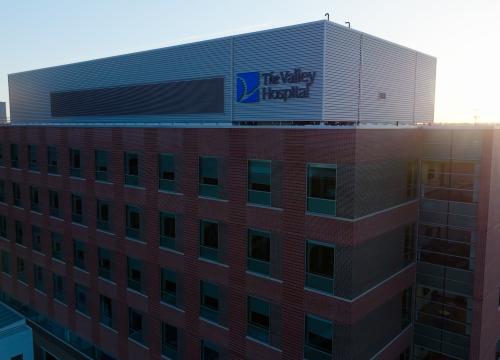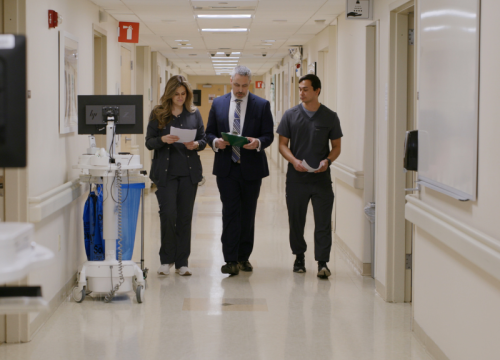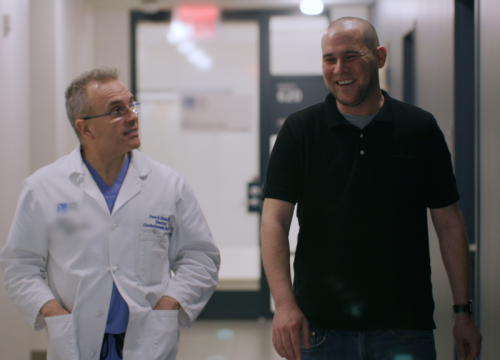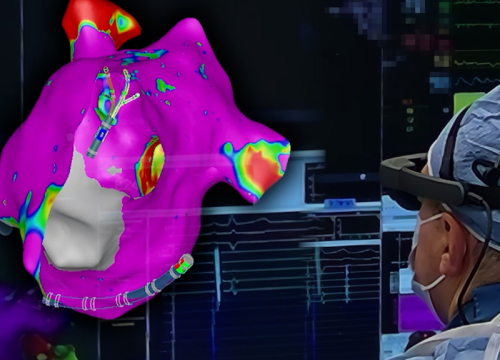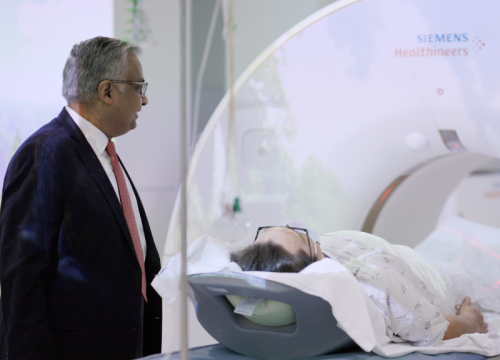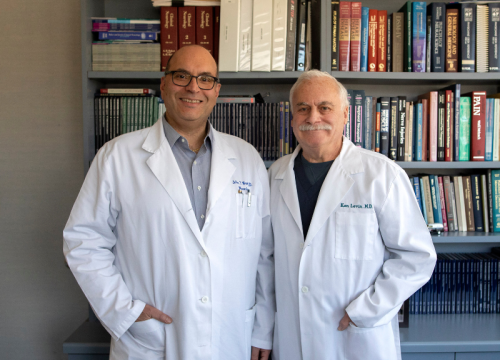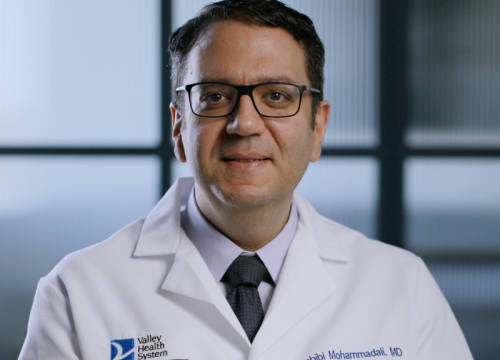X-rays and CT scans may suggest that a patient has lung cancer. However, the actual diagnosis of lung cancer can only be made using a biopsy (tissue samples) reviewed by a pathologist.
At Valley’s Lung Cancer Program, biopsy samples are gathered through a variety of minimally invasive procedures including the following:
Bronchoscopy
- A bronchoscopy is a procedure in which our doctors insert a flexible, lighted tube called a bronchoscope through the nose down into the lungs.
- If the mass or abnormal area can be accessed by the bronchoscope, then a small piece can be obtained as a biopsy.
- This procedure is usually performed with sedation.
Transbronchial Needle Aspiration
- This is a minimally invasive procedure for the detection and diagnosis of early-stage lung cancer.
- Because the system allows for earlier lung cancer diagnosis, it increases the chance of survival. And it eliminates the need for the lengthy watchful waiting approach traditionally taken after finding a small spot deep in the lung on a thoracic CT scan.
- The GPS-like electromagnetic navigation system known as superDimension® allows our surgeons to reach previously unreachable lesions deep in the lungs without the need for high-risk invasive procedures.
- Using the navigation system, surgeons steer a small catheter through the mouth to the deepest areas of the lungs.
- This approach is particularly significant for patients who have a lung lesion that is hard to reach, or who cannot tolerate a more invasive procedure.
Transthoracic Needle Biopsy
- In this type of biopsy, also referred to as CT-guided transthoracic needle biopsy, a patient is in a CT scanner.
- The interventional radiologist identifies the abnormality on a CT scan. The physician then inserts a needle into the abnormality while the patient is under local anesthesia to obtain tissue cells.
- Our doctors can obtain adequate biopsies on nodules smaller than the size of a dime. Our pathologists then evaluate the cells.
- Patients go home on the same day as the biopsy. Results are usually available in 48 hours.
Endobronchial Ultrasound (EBUS) Guided Biopsy
- EBUS is a type of bronchoscopy that uses a flexible bronchoscope with a tiny ultrasound device on the tip.
- The ultrasound guides the physician to see through the airway walls to locate enlarged lymph nodes or masses.
- A thin needle can be passed through the scope to obtain a biopsy sample.
- EBUS is used often for abnormalities located near the center of the chest, which tend to be out of reach for transthoracic needle biopsy.
- EBUS is also useful in diagnosing other conditions in the chest, including lymphoma, metastases from other cancers, and inflammatory conditions such as sarcoidosis.
Lymph Node Biopsies with EBUS
- Lymph nodes in the center of the chest may need to be biopsied (sampled) to see if cancer has spread to this area. We do this because, often, CT and PET scans are not completely accurate in determining if cancer has spread to the lymph nodes.
- In many institutions, lymph nodes are biopsied using a procedure called mediastinoscopy. In this procedure, an incision is made in the neck area to expose the lymph nodes for biopsy.
- At Valley, lymph node biopsies can be performed using EBUS. We use EBUS to perform lymph node biopsies instead of the invasive mediastinoscopy procedure in about 90 percent of our patients.
- Even very small lymph nodes less than one centimeter (about half an inch) are able to be sampled using EBUS at Valley.
VATS (Video Assisted Thoracic Surgery) Biopsy
- VATS biopsy is a surgical procedure where one or two small incisions are made on the side of the chest.
- These incisions allow the surgeon to insert a camera and long instruments to locate and take a sample of the mass or abnormal area.
- During a VATS biopsy, the surgeon may also be able to remove the mass or abnormal area in the lung.




